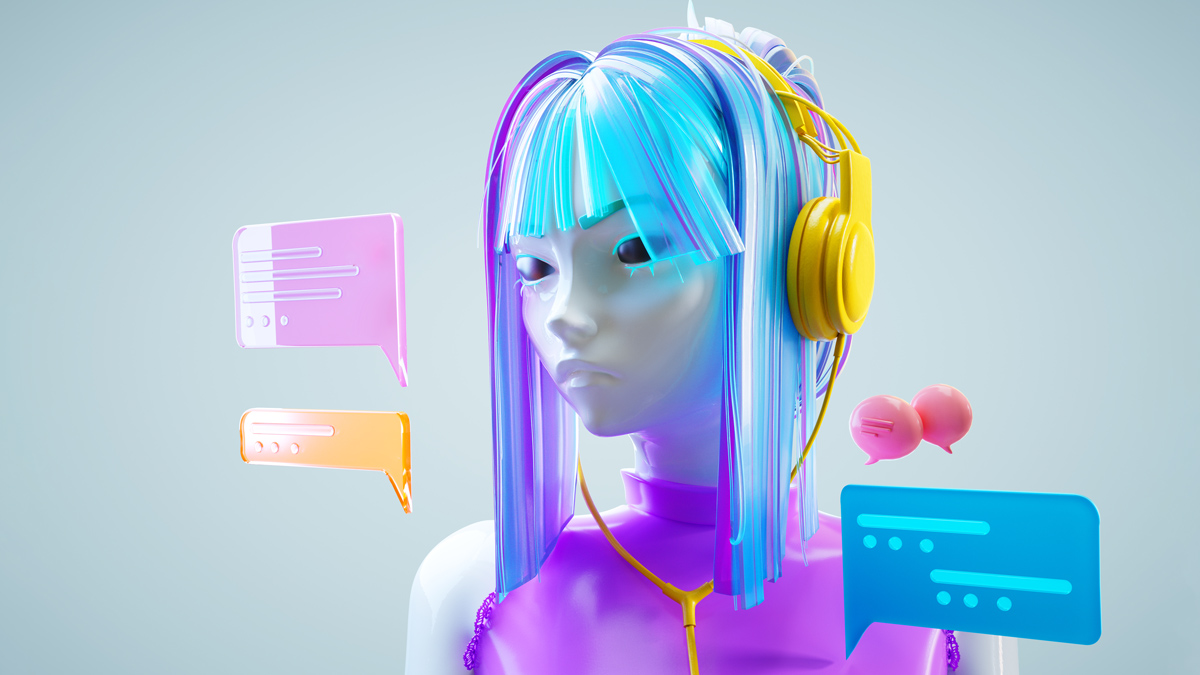On April 9, social media influencer Miquela Sousa (@lilmiquela) announced her 20th birthday on Instagram to her 2.6 million followers. In fact, it was her first birthday ever. Lil Miquela hit the social media scene in 2016 as a virtual 19-year-old Brazilian American. Only recently did this AI marketing tool, created by the virtual influencer startup Brud, “decide” to age.
One aspect of the post was entirely typical: product placement. In her birthday announcement, Lil Miquela sports boxer briefs from the streetwear brand Supreme and twin hair buns dyed in rainbow hues by LA-based stylist Daniel Moon. Lil Miquela has also worked with luxury brands, including Prada and Chanel, and currently brings in an estimated $11 million annually.
Virtual influencers are growing in popularity as more brands turn to AI characters. The appeal is understandable: greater creative control and faster output, often at a lower cost. Virtual influencers also seem to be effective. One influencer marketing agency’s 2022 survey found that over a third of participants had purchased products or services promoted by a virtual influencer.
But much like humans, virtual influencers can backfire—from giving sales pitches that aren’t believable to creeping consumers out. Before you use an AI avatar for your next marketing campaign, ask these four questions to make sure that your brand and AI are a strong match.
Are you selling an object or an experience?
Virtual influencers are great at marketing clothing and jewelry. Consumers can imagine how they’d look in Supreme boxer briefs after seeing them on Lil Miquela. But when AI influencers post about experiences such as dining at restaurants or staying at hotels, consumers question their authenticity because AI can’t actually taste new menu items or feel luxe hotel linens.
My team’s research suggests that virtual influencers that present themselves as independent and authentic are especially poor at selling experiences, likely because consumers distrust virtual characters they know are preprogrammed yet pretend to have a mind of their own. Lil Miquela’s posts regularly go against social norms, displaying, for example, her unshaven underarms or unconventional table manners. Unlike humans, who are more effective when perceived as nonconformers, virtual influencers that are “rebels” can be threatening.
If your brand is looking to sell perfume, a cruise, or other products or experiences that require an influencer to vouch for something sensory or intangible, consider partnering with an AI character like Imma (@imma.gram), a virtual influencer in Japan with perfect skin and a penchant for conformity. Artificiality is part of Imma’s brand, so hawking something she clearly hasn’t experienced isn’t as much of a conflict for consumers.
What image are you trying to project?
AI is a buzzword for all things futuristic. Brands that want to present themselves as cool and forward-thinking can benefit from this association when they use a virtual influencer. Their visibility might even benefit from the bit of controversy that comes with choosing AI.
But a cutting-edge AI avatar feels like an odd match for brands selling more conventional products like cleaning supplies or food staples. Companies selling these products are better off pairing with a human influencer whose everyday experiences, from washing kids’ soccer uniforms to making sandwiches, feel more believable.
A brand’s values are also key to its image. The most successful virtual influencers have dynamic personalities expressed through realistic facial expression and playful banter, and even take stands on real issues. Lil Miquela supports the Black Lives Matter Movement. Leya Love (@leyalovenature) supports environmental causes and spoke at the United Nations’ 2021 Global Youth Summit.
Consumers will likely place more trust in virtual influencers whose programmed values align with their own. So make sure the values of your AI influencer match your target customers.
How ‘real’ should you get?
Virtual influencers can be so lifelike that most people can’t tell them apart from real humans. The Spanish virtual influencer Aitana Lopez (@fit_aitana) openly discloses she is an #aimodel, yet many followers still initially believed she was real.
But not all virtual influencers are this convincing. AI characters that look realistic but not fully human risk triggering the uncanny valley effect and making consumers uncomfortable. Humans can also feel threatened by virtual influencers taking real jobs: Mahindra Racing, a U.K.-based Indian racing team, abandoned its virtual ambassador Ava only days after launching her when fans complained that the job should have gone to a human.
One option is to use an AI influencer that doesn’t look convincingly human at all—which avoids triggering uncanny valley and does not take on a role a human could have done. The huge brown eyes and cheerful smile of virtual influencer CB (@casasbahia), for example, make him look more like a Disney character than a robot coming for our human jobs.
For more realistic influencers, companies should ensure the AI is convincing enough not to creep out consumers. And even when the AI meets this bar, companies should consider consumer expectations. Replacing an existing human with an AI influencer may generate pushback in a way that deploying an AI influencer for a new task may not.
Are you prepared for what’s next?
In the near future, virtual influencers powered by generative AI tools like ChatGPT will have greater capacity to interact with consumers, develop their own personalities, and produce marketing messages on their own. Their personalities could even be shaped by the consumers they are targeting, making them especially persuasive. Though virtual influencers are an emerging field of regulation, governments will inevitably institute stricter rules. A major European Union AI law, for example, will soon require developers to label AI-generated content.
If you adopt new technologies too quickly—like adjusting an AI’s personality to microtarget customers—you risk falling on the wrong side of regulation and angering consumers who may feel deceived. So get ahead of regulation and consumer sentiment and ask yourself hard questions. Even if it’s unregulated now, is this technology something the government may soon restrict? How might my customers react if they find out I’m using this technology?
AI influencers offer exciting potential to produce marketing campaigns that are innovative and cost-effective. They could be a great match for your business—but they aren’t a great match for every business. Proceed with caution and be thoughtful about what you’re trying to sell, the image you’re trying to project, how realistic the influencer should be, and what’s next.




